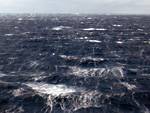Seasickness
Cause of seasickness
Motion sickness relates to our sense of spatial orientation which tells the brain where the body is “in space”: what direction it is moving, what direction it is pointing, and if it is turning or standing still.
This sense of spatial orientation is regulated by complex interaction of the 4 following mechanisms:
- Both inner ears monitor the directions of motion in three dimensions.
- Our eyes observe where our body is in relation to its surroundings as well as the direction of motion.
- Skin pressure receptors such as those located in the feet and seat sense in what direction the gravitational pull affects our body, in other words: what side is up?
- Muscle and joint sensory neural receptors report which parts of the body are in motion and in which relative direction.
All these sensory data will subsequently be processed in the central nervous system, which enables us to balance, move and position ourselves properly in our three dimensional surroundings.
The symptoms of motion sickness appear when the brain receives conflicting messages from the 4 systems
And a conflict on board can easily occur: when reading a book on deck your eyes observe no motion, yet your inner ears feel the motion of the yacht due to the waves.
Symptoms of seasickness
The first telltales of such a conflict are often lethargy and a slight drowsiness
But for the victims it will usually start with a nauseous feeling and / or a slight cold sweat. Then these symptoms increase, and the face becomes paler, perhaps even greenish. Any attempt to concentrate on a task will worsen this predicament. The nauseous feeling eventually becomes incontrollable, and leads to – sometimes violent – vomiting.
The victim should be wearing a life jacket and/or be tethered via a safety harness.
Prevention of seasickness
Hours before casting off you could well use an over-the-counter antihistamine such as meclizine or dimenhydrinate and you should – before and during the voyage – avoid spicy or rich foods alcohol and apples.
For longer trips, a prescription medication called Transderm-Scopolamine patch can be worn behind the ear for up to three days at a time. Side-effects of these medications usually consist of sedation and dry mouth.
If, despite all these precautions, you still notice the early symptoms with one of you crew, act immediately and :
- get the victim out on deck but not in direct sunlight
- don't give the victim any task
other than steering.
Steering – as well as studying the horizon works and will help to anticipate the boat's motion. Else, let the victim lay in the cockpit to leeward with closed eyes. - steady the yacht, either by heaving to or letting the best helmsman drive the yacht.
- even a slight change of course (with respect to the waves) might help.
Read more articles in my yachting guide.
Yachting guide
- Charter guide
- Assisted bareboats
- Bareboat requirements
- Choosing a charter yacht
- Catamarans & monohulls
- Prevent seasickness
- Greek sailing areas
- When to sail in Greece
- Yacht charter provisioning
- Itineraries Ionian
- Itineraries Argo-Saronic
- Itineraries Cyclades
- Itineraries Dodecanese
- One-way itineraries
- Flights & ferries
- Last minutes & budget
- Sailing between Greece & Turkey
- Greek chart terms
- Greek fishing techniques
- Climate graphs Athens
- Climate graphs Bodrum
- Distances sailing Greece
- Itineraries Ionian + Aegean
